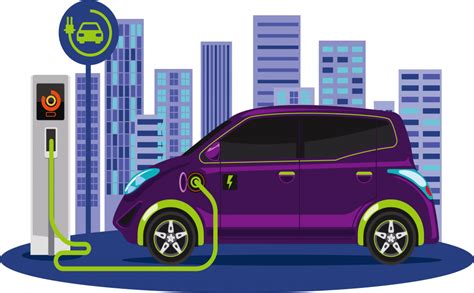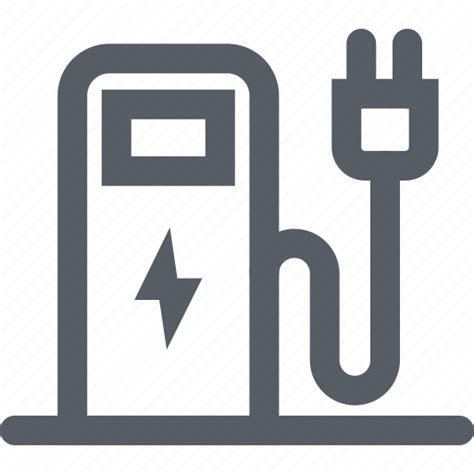Electric vehicles (EVs) cannot charge themselves because they require an external power source to recharge their batteries. Unlike gasoline-powered vehicles that can refuel at gas stations, EVs need to be plugged into a charging station or a wall outlet to recharge. The batteries in EVs store electrical energy that powers the vehicle’s electric motor, and when the battery runs out of charge, the vehicle cannot move. While some EVs have regenerative braking systems that can recharge the battery while driving, it is not enough to fully charge the battery.
Therefore, EV owners need to plan their trips and ensure they have access to charging stations or a reliable home charging setup to keep their vehicles charged. However, advancements in technology are being made to improve the range and charging
Why can’t electric cars charge themselves with alternators?
Electric vehicles (EVs) differ from traditional combustion engine vehicles in that they do not have an alternator to generate electricity from mechanical power. If an alternator were to be installed in an EV, it would require the battery to generate electricity, which would ultimately use more electricity than it generates. Therefore, EVs rely solely on their battery packs to power the vehicle’s electric motor.
Why can’t electric motors charge themselves?
The conservation of energy principle is the primary reason why electric cars cannot recharge themselves while in motion. This principle asserts that energy cannot be created or destroyed, but only transformed from one form to another. Therefore, the energy required to power an electric car must come from an external source, such as a charging station or a battery pack. While there have been some advancements in wireless charging technology, it is still not efficient enough to provide a significant amount of energy to an electric car while it is in motion.
Will electric cars eventually charge themselves?
It is currently impossible for electric cars to recharge themselves due to the lack of technology that can regenerate the battery’s power faster than it is consumed. This means that electric car owners must rely on external charging stations or home charging units to keep their vehicles powered. While advancements in battery technology and charging infrastructure are being made, self-charging electric cars are not yet a reality.
What happens if your EV car runs out of power?
In summary, electric vehicles (EVs) have built-in warning systems that alert drivers when their car is running low on energy. These warnings are given multiple times, and if ignored, the EV will gradually slow down until it comes to a complete stop. If this happens, calling a tow truck is a viable solution. However, it’s important to keep a few things in mind, such as preventing the wheels from spinning during the tow.
What is the lifespan of an electric car battery?
The lifespan of an electric car battery varies depending on several factors such as the type of battery, usage patterns, and environmental conditions. Generally, lithium-ion batteries, which are commonly used in electric cars, have a lifespan of around 8-10 years or 100,000-200,000 miles. However, with proper maintenance and care, the battery life can be extended. It is important to avoid extreme temperatures, charge the battery regularly, and avoid deep discharges.
Additionally, advancements in battery technology are constantly being made, which may lead to longer-lasting batteries in the future.
Can you jumpstart an electric car?
If you find yourself with a dead 12-volt battery in your electric vehicle, don’t worry – there are several solutions available. One option is to remove the battery and charge it using a bench charger. Alternatively, you can jump-start the battery using a pair of jumper cables and another vehicle’s 12-volt system. Another option is to use a portable booster pack to rejuvenate the battery.
Whatever method you choose, it’s important to address the issue promptly to ensure your vehicle is running smoothly and efficiently.
Can AAA jump an electric car?
Whether you drive an electric car or a traditional gas-powered vehicle, AAA is here to assist you. Our services are designed to cater to all types of vehicles, so you can rest assured that we have you covered. From battery replacements to tire changes, fuel delivery to lockout assistance, our team of experts is ready to help you get back on the road safely and quickly. With AAA, you can enjoy peace of mind knowing that you have reliable assistance no matter what type of vehicle you drive.
Can you push a dead electric car?
If you ever find yourself in a situation where your electric car breaks down, you may wonder if it’s possible to push it. The answer is yes, but only if your EV has a neutral gear. It’s important to note that without power, steering will require more effort, similar to a traditional car that has run out of fuel and needs to be pushed. So, if you’re driving an electric car, make sure to familiarize yourself with its features and capabilities to ensure you’re prepared for any unexpected situations.
How much electricity does it cost to charge an electric car?
Measuring the fuel efficiency of an electric vehicle involves calculating the kilowatt-hours per 100 miles. To illustrate, if the cost of electricity is 10.7 cents per kilowatt-hour, charging a 54-kWh battery with a 200-mile range would amount to approximately $6. On the other hand, charging a vehicle that requires 27 kWh to travel 100 miles would only cost three cents per mile.
How much does it cost to charge an electric car at Walmart?
The cost of using the service varies based on the power level of the vehicle, ranging from 25 cents to 99 cents. Additionally, there is a session fee of $1.
How much does it cost to charge an electric car for 300 miles?
When it comes to charging an electric vehicle (EV) in public stations, the cost usually ranges from $0.11 to $0.30 per kilowatt-hour (kWh). For instance, if you’re planning a 300-mile road trip with your Tesla, charging it twice for a full battery would cost you around $22.
00 to $60.00, depending on the charging station’s rates. It’s worth noting that the cost of charging an EV may vary depending on the location, time of day, and the type of charging station used. However, compared to the cost of gasoline for a traditional car, charging an EV is generally more affordable and environmentally friendly.
Is it cheaper to charge an electric car than gas?
To put it simply, owning an electric vehicle (EV) can save you a significant amount of money in the long run. According to research, charging an EV costs about three times less per mile than fueling a gas-powered car. For instance, if you drive a compact sedan, you can expect to pay around $0.05 per mile to charge your EV, whereas it would cost you approximately $0.
14 per mile to fuel your gas-powered car. This means that you can save a considerable amount of money on fuel costs by switching to an EV.
What are the disadvantages of electric vehicles?
As an AI language model, I do not have personal opinions or beliefs. However, some of the disadvantages of electric vehicles include limited driving range, longer charging times, and higher upfront costs compared to traditional gasoline-powered vehicles. Additionally, the availability of charging stations may be limited in some areas, making it difficult for drivers to travel long distances. There are also concerns about the environmental impact of producing the batteries used in electric vehicles.
However, it is important to note that these disadvantages are being addressed through advancements in technology and infrastructure, and the benefits of electric vehicles, such as reduced emissions and lower operating costs, make them a promising alternative to traditional vehicles.
Are Tesla charging stations free?
Triple-delimited paragraph:
“`Many people wonder if it’s free to charge a Tesla at a charging station. Unfortunately, the answer is no. Charging your Tesla at a Supercharger station comes with a price tag, typically around 26 cents per kilowatt-hour (kWh). This cost can add up quickly, especially if you’re using the Supercharger frequently.
In fact, it’s often more expensive than using other means of charging, such as a 120-volt or 240-volt outlet. However, it’s important to note that Tesla does offer some free Supercharger credits to new owners, and some charging stations may offer free charging as a promotion or incentive.“`
Do electric cars use oil?
Electric cars have a distinct advantage over traditional cars when it comes to maintenance. Since they use different drivetrains, you won’t have to worry about routine oil changes. However, it’s important to note that electric cars still require regular maintenance. Instead of oil changes, you’ll need to keep an eye on three important fluids: coolant, brake fluid, and windshield washing fluid.
By staying on top of these maintenance tasks, you can ensure that your electric car runs smoothly and efficiently for years to come.
What happens if your Tesla runs out of battery in the middle of nowhere?
If you’re driving a Tesla and your battery is running low, don’t worry – the car will take care of you. As the battery level drops to around 15mph, the car will alert you that it’s about to stop driving. It will then come to a complete stop and put itself into parking mode. From there, you’ll need to call for roadside assistance or a tow truck to take you to the nearest charging station.
While it may be inconvenient, it’s a safety feature that ensures you won’t be stranded on the side of the road with a dead battery.
Is there a portable charger for electric cars?
Looking for a portable and versatile charging solution for your Tesla? Look no further than the Lectron Level 1/Level 2 Portable Tesla Charger. With dual charging plugs (NEMA 5-15 and 14-50), this charger is compatible with all Tesla models and can deliver up to 12 or 32 amps of power depending on your needs. And if you’re not a Tesla owner, don’t worry – Lectron also offers adapters for other electric vehicle models. Whether you’re on a road trip or just need a convenient charging option at home, the Lectron charger is a reliable and efficient choice.
What happens if Tesla battery goes to 0?
It’s important to note that allowing your vehicle’s battery to completely discharge to 0% can cause damage to various components. To prevent this from happening, the Model 3 has a low-power consumption mode that activates when the displayed charge level reaches around 0%. During this mode, the battery stops supporting the onboard electronics and auxiliary low voltage battery, effectively protecting against a complete discharge.
How do you put an electric car in neutral with a dead battery?
If an electric car has a dead battery, it may not be possible to shift it into neutral using the traditional method. However, there are a few alternative methods that can be used. One option is to use the emergency release mechanism, which is typically located near the gear selector. This mechanism can be used to manually shift the car into neutral.
Another option is to use a portable battery booster to provide enough power to the car’s electrical system to allow it to shift into neutral. It is important to note that attempting to move an electric car with a dead battery can be dangerous and should only be done in emergency situations. It is always best to consult the car’s owner’s manual or contact a professional for assistance.
Related Article
- Why Canadian Flag Half Mast Today?
- Why Can Zandalari Trolls Be Paladins?
- Why Can The Sprint Be Cancelled?
- Why Can T You Microwave Uncrustables?
- Why Can T My Sim Cook?
- Why Can T Hamsters Get Wet?
- Why Can Some People Not Float?
- Why Can Police Lie During Interrogation?
- Why Can People Hear My Airpods?
- Why Can Others Hear My Airpods?


